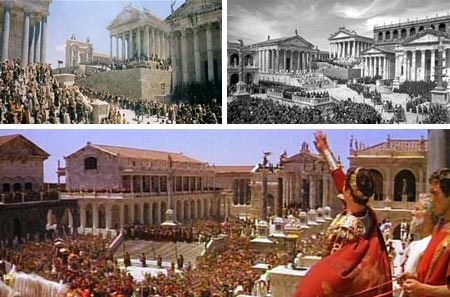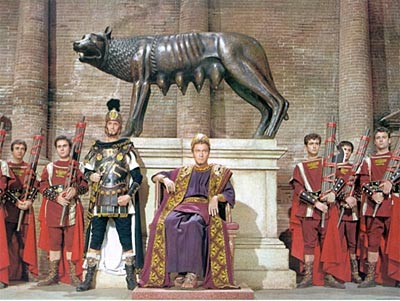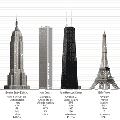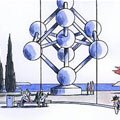The Fall of the Roman Empire uit 1964 was de laatste grote epische sandalenfilm met kamerbrede muziek en sloot een periode af waarin de ene na de andere historische spektakelfilm het thuisblijvende televisiepubliek voor een unieke ervaring met oogstrelende technicolor en overrompelende super cinemascope weer naar de bioscoop moest lokken. Je zou deze film ook de The Fall of the Roman Epic kunnen noemen, want het genre zou daarna voor ruim drie decennia verdwijnen om pas in 2000 te herrijzen met Gladiator van Ridley Scott. Na het commerciële succes van deze film zouden filmproducenten het weer aandurven om de historische oudheid als decor te kiezen. Troy (2004) werd een nog grotere hit dan Gladiator, maar Alexander (2004) van Oliver Stone deed het in de Verenigde Staten niet goed, al konden de opbrengsten buiten Amerika de kosten van de film (155 miljoen dollar) net dekken.

Another contributing factor may have been the influx of Italian-made muscleman epics, or pepla; cheaply made, badly dubbed films set in ancient Greece or Rome featuring muscle-bound leads in tiny, brightly coloured „skirts„ that flooded cinemas and drive-ins during the 1950s and 1960s. Although fun, the sheer numbers and poor quality of these films would have eventually tired audiences of seeing the ancient world on screen.
Bron: shadowlocked.com

Dimitri Tiomkin‘s score, which is one of the notable features of the film, is more than 150 minutes in length. It is orchestrated for a large orchestra, including an important part for cathedral organ. (…) The score was recorded by the Sinfonia of London (uncredited) at Shepperton Studios. The music editor was George Korngold, son of Erich Wolfgang Korngold. A sound track album was released by Columbia Records. ( Bron: en.wikipedia.org )
De score van Dimitri Tiomkin werd in 1964 genomineerd voor een oscar voor de beste original score maar Richard M. en Robert B. Sherman (Mary Poppins, vanmiddag om 17.05 bij de BBC 1) gingen ermee vandoor.
The Fall and Rise of the Roman Epic
Film Score Rundown by Bill Wrobel [ filmscorerundowns.net ]













